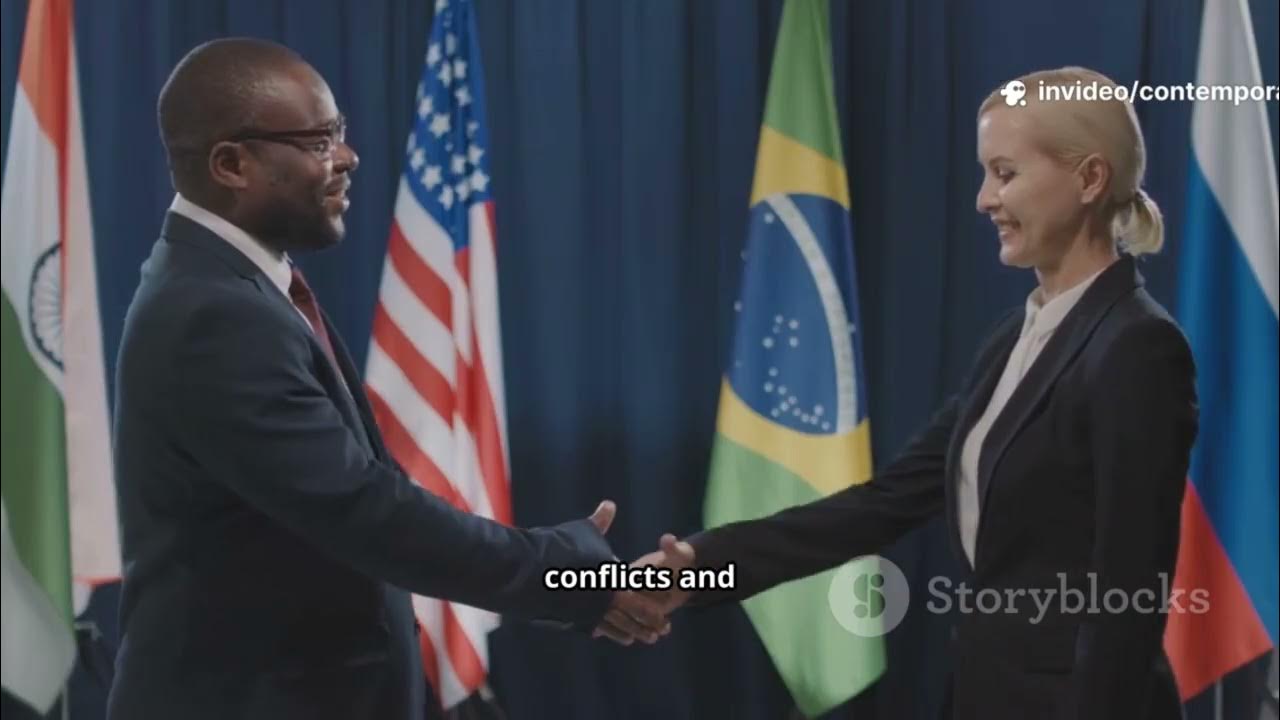Theories in Cultural Globalization (The Contemporary World)
Summary
TLDRThis video lecture explores the intricate relationship between culture and globalization, defining cultural globalization as the global exchange of ideas, meanings, and values that enhance social relations. The speaker emphasizes the significance of culture, encompassing knowledge, beliefs, arts, morals, laws, and customs, as a foundation for human interaction. Various cultural theories, including cultural homogeneity, heterogeneity, hybridization, and differentialism, are discussed, highlighting the dynamics of cultural influence and conflict. The examples provided, such as McDonaldization and Americanization, illustrate how dominant cultures shape local practices while also acknowledging the emergence of diverse cultural expressions in a globalized world.
Takeaways
- 😀 Cultural globalization refers to the transmission of ideas, meanings, and values globally, enhancing social relations.
- 😀 Culture is defined as a complex whole, including knowledge, beliefs, arts, morals, laws, customs, and habits acquired by individuals in society.
- 😀 Morals and beliefs play a crucial role in shaping culture, with examples drawn from various religious practices.
- 😀 Cultural homogeneity describes a reduction in cultural diversity due to the widespread diffusion of cultural symbols and ideas, often dominated by powerful nations.
- 😀 McDonaldization highlights the principles of efficiency, calculability, predictability, and control that characterize modern economies and influence cultural practices worldwide.
- 😀 Americanization involves the assimilation of American values and customs across different cultures, impacting areas like education, language, and entertainment.
- 😀 Cultural hybridization is the blending of different cultural elements, resulting in new, unique cultural expressions, such as the fusion of Korean pop music with American influences.
- 😀 Cultural heterogeneity reflects the coexistence of multiple cultures, leading to greater diversity and the emergence of multicultural societies.
- 😀 Glocalization describes how global cultures adapt to local contexts, exemplified by fast food franchises modifying their offerings to suit local tastes.
- 😀 Cultural differentialism emphasizes the conflicts that arise between distinct cultures, often leading to clashes over values and practices.
Q & A
What is cultural globalization?
-Cultural globalization refers to the transmission of ideas, meanings, and values across the world, intensifying social relations and influencing how cultures interact.
How does the lecturer define culture?
-Culture is defined as the complex whole that includes knowledge, beliefs, arts, morals, customs, and any other capabilities and habits acquired by individuals as members of society.
What are the two main categories of culture mentioned?
-Culture can be categorized into material culture, which includes tangible items like clothing and architecture, and non-material culture, which encompasses intangible aspects like knowledge, morals, and languages.
What does cultural homogeneity mean?
-Cultural homogeneity refers to the reduction in cultural diversity through the widespread diffusion of cultural symbols, practices, and values, often led by dominant cultures.
Can you explain cultural heterogeneity?
-Cultural heterogeneity is the coexistence of diverse cultures within a society, where different cultural influences enhance local diversity rather than diminish it.
What is cultural hybridization?
-Cultural hybridization is the blending of elements from different cultures to create new cultural forms, such as the fusion of local food preferences in international fast-food chains.
What is the role of cultural differentialism?
-Cultural differentialism emphasizes that cultures can clash and maintain their distinctiveness rather than merging, focusing on barriers that prevent cultural exchanges.
How does American culture influence other countries, according to the lecture?
-American culture influences other countries through various means, such as clothing, media, education systems, and political frameworks, often leading to cultural homogenization.
What is the McDonaldization phenomenon?
-McDonaldization refers to the principle of fast-food restaurants dominating various sectors by emphasizing efficiency, calculability, predictability, and control in service delivery.
What example does the lecturer use to illustrate cultural hybridization?
-The lecturer uses the example of K-pop music, which blends traditional Korean music with Western pop influences, demonstrating how cultures can merge to create new cultural expressions.
Outlines

このセクションは有料ユーザー限定です。 アクセスするには、アップグレードをお願いします。
今すぐアップグレードMindmap

このセクションは有料ユーザー限定です。 アクセスするには、アップグレードをお願いします。
今すぐアップグレードKeywords

このセクションは有料ユーザー限定です。 アクセスするには、アップグレードをお願いします。
今すぐアップグレードHighlights

このセクションは有料ユーザー限定です。 アクセスするには、アップグレードをお願いします。
今すぐアップグレードTranscripts

このセクションは有料ユーザー限定です。 アクセスするには、アップグレードをお願いします。
今すぐアップグレード5.0 / 5 (0 votes)






